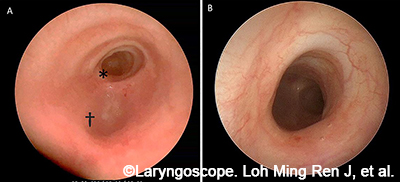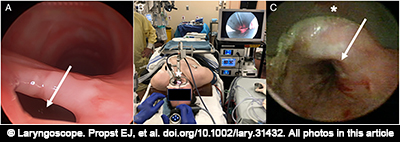While resilience has been said to be a form of growth, we should be asking what we can do within our organization and societies so that everyone gets a slice and then see what individuals can achieve with that support.


While resilience has been said to be a form of growth, we should be asking what we can do within our organization and societies so that everyone gets a slice and then see what individuals can achieve with that support.

Otolaryngologists Open West Africa Institute for Special Surgery (WAISS) to Improve Access to Care

This protocol describes the method for creating 3D-printed trachea models for use in high-fidelity simulation-based training and advanced surgical planning for pediatric patients undergoing slide tracheoplasty.

This study is about a patient for whom suspension microesophagoscopy was performed and describes how this approach allowed for improved management.

The use of p16 as a surrogate marker for HPV has gained traction, but is it sufficient as a surrogate for HPV-related squamous cell carcinoma?

The timing of tracheostomy tube changes should be tailored to each individual case.
Onabotulinum Toxin A (BoNT-A; Botox) Therapy Improves Drooling Severity in Children with Silorrhea and adverse effects were few, transient, and not severe.
Advanced Thyroid Carcinomatous neural invasion can be a reversible process, and recovered nerves may demonstrate normal morphology and electrophysiological activity.
With morbidity costs of facial trauma exceeding $1 billion each year, ew database informs facial fracture-related management and cost trends for U.S. Metropolitan hospitals.
The fascia taco technique was shown to be safe, easy to apply, and short in duration, with a high overall success rate and low morbidity in patients requiring NSP closure.